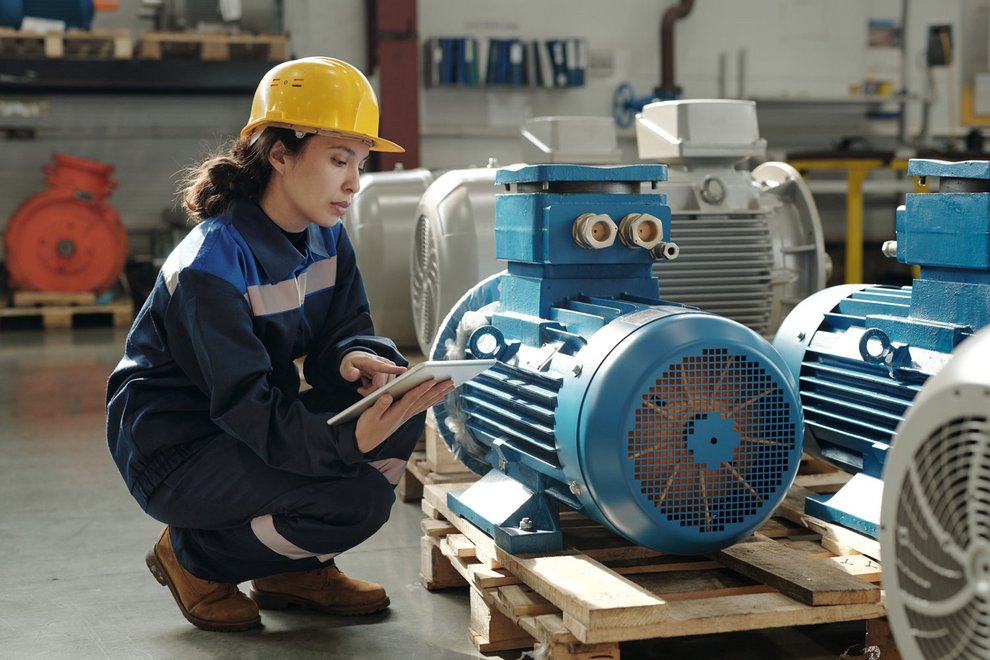Even aging machines and systems can keep pace with Industry 4.0 with a little fine-tuning and targeted upgrades. Even if questions often arise as to whether outdated machinery can still be networked with modern IoT solutions or whether this requires new investments – with a few simple steps and a good strategy, you can still get a lot out of your systems.

Industry 4.0 is on the rise. Smart monitoring, predictive maintenance – technologies and processes that are designed exclusively for the very latest machines and systems. Or so you might think. In fact, older systems can rise to new heights with a retrofit. The term retrofit basically refers to plant modernization. Machines and systems that are getting on in years are therefore not disposed of or replaced, but simply brought up to date. Components are specifically replaced, modified or extended, while the system as a whole remains the same.
Although not every old system can be retrofitted across the board, there are some enormous advantages:
Extended service life.
By integrating modern sensors or control systems, drive technologies or interfaces, systems can be used for much longer.
Cost reduction.
In most cases, retrofits turn out to be a much more cost-effective method of system optimization than a new purchase.
Increase in productivity.
With the technological extensions and upgrades, you can give your system a real performance boost. This naturally also has an impact on product quality and availability thanks to higher production output.
Sustainability.
Before a lot of resources are spent on building new facilities, you get the most out of your existing production facilities. New technologies also ensure regulated energy consumption, which saves you money.
Data acquisition.
If Industry 4.0 has shown us one thing, it is that we simply can no longer do without data. Anyone who does not know and read their systems and machines down to the smallest component will lose out in terms of production quantity and quality in the long term. A retrofit is the first right step here.
Does a retrofit require the purchase of new production machines?
In short: No, if a retrofit is carried out conscientiously and purposefully under the right circumstances. The advantage is that retrofitting is possible for many machines. However, retrofitting should always be carried out on an individual basis. Depending on the production conditions and processes, a careful concept is a must in order to retrofit systems efficiently and economically. The better the concept and the subsequent system optimization, the less likely it is that you will have to invest in new machines – which would be obsolete in five to ten years anyway.
Sensors – small but powerful
Sensors are an essential part of a retrofit strategy. The small control units can now not only be installed on entire machine parks in a completely flexible and mobile manner, but they also provide very valuable insights into the core of the system. Important parameters that a machine or system sends out every second determine production output, production quality, the service life of the system and its current state of health. Based on some core parameters, both software solutions and experts themselves can make better decisions when it comes to maintenance and servicing:
Weight: Sensors can record production progress based on weight, for example. If the production quantity reaches a predefined target value, a message is sent to initiate the next production step.
Volume: If a silo is filled during production, the fill level provides relevant key figures about the production status.
Temperature: Target temperatures can also be communicated via networked systems – regardless of whether it serves the current production step or whether a potential danger is communicated with increased temperatures.
Distances: Under certain circumstances, distances during production are also crucial. Deviations that are barely visible to the human eye are precisely detected by sensors and immediately provide the corresponding data.
There are numerous other sensor variants that recognize and communicate helpful and even crucial data where other outdated systems fail. It is worthwhile for every company to look into relevant system upgrades.
Upgrade systems for Industry 4.0 now!
Although retrofitting is very individual and requires extensive conceptual work, it is always worth the effort. A wide variety of sensors can already be used today and networked with the internal ERP or a central software solution such as KENEXOS®. Old machines and systems may be getting on in years, but they may still deliver the necessary performance on a daily basis. There is still enormous potential in many such systems, which can be recognized and exploited through a retrofit – an economically extremely attractive method of breathing fresh air into production!
About KENEXOS®
With Kreutzpointner Business Software GmbH (KBS for short), Kreutzpointner is setting a significant milestone in the technical development of the entire group of companies. Kreutzpointner Business Software GmbH focuses on the special requirements and digital needs of industrial customers with an independent business model. The operational launch took place in October 2020.
With KENEXOS®, KBS offers corporate customers an individually expandable application platform with its own software products and focuses on the implementation of industrial applications. KENEXOS® offers modern web technology for access via a wide range of end devices and enables integration with existing systems via an API interface. The standard modules include, for example, construction site documentation, task and ticket recording, plant management and maintenance and many more. The application platform is available for in-house installation (on-premise) or as a cloud solution (SaaS).
The ideas and the technical basis for Kreutzpointner Business Software GmbH have been successfully developed in recent years as part of the company-wide “Research & Development” process. In addition to the IT systems division, the new digital unit ideally rounds off Kreutzpointner’s large portfolio.

